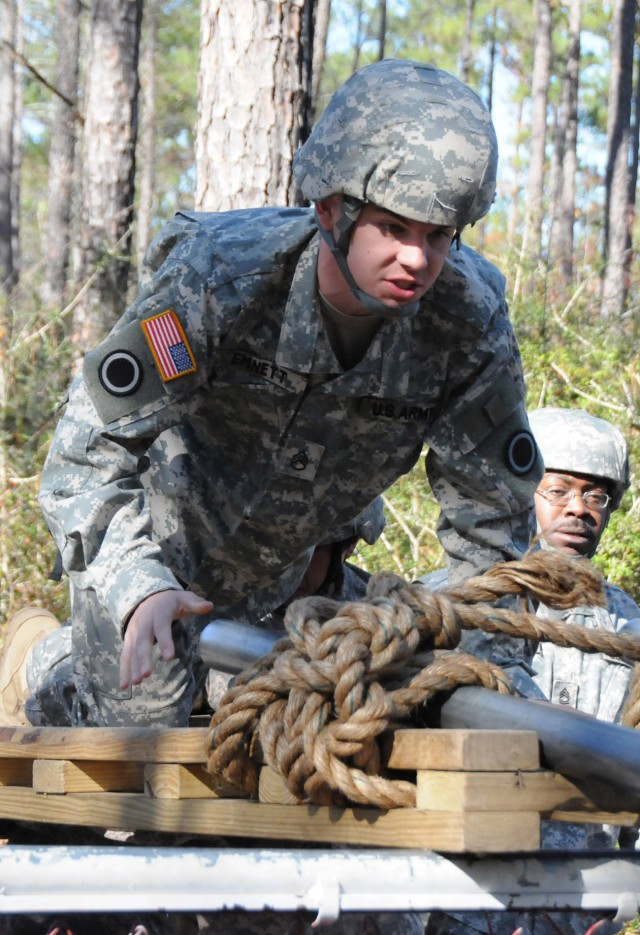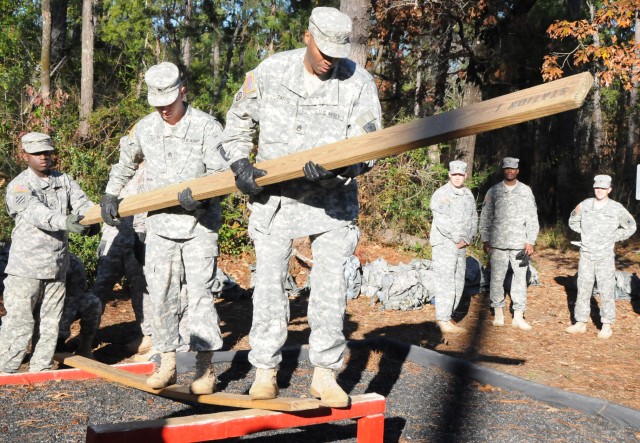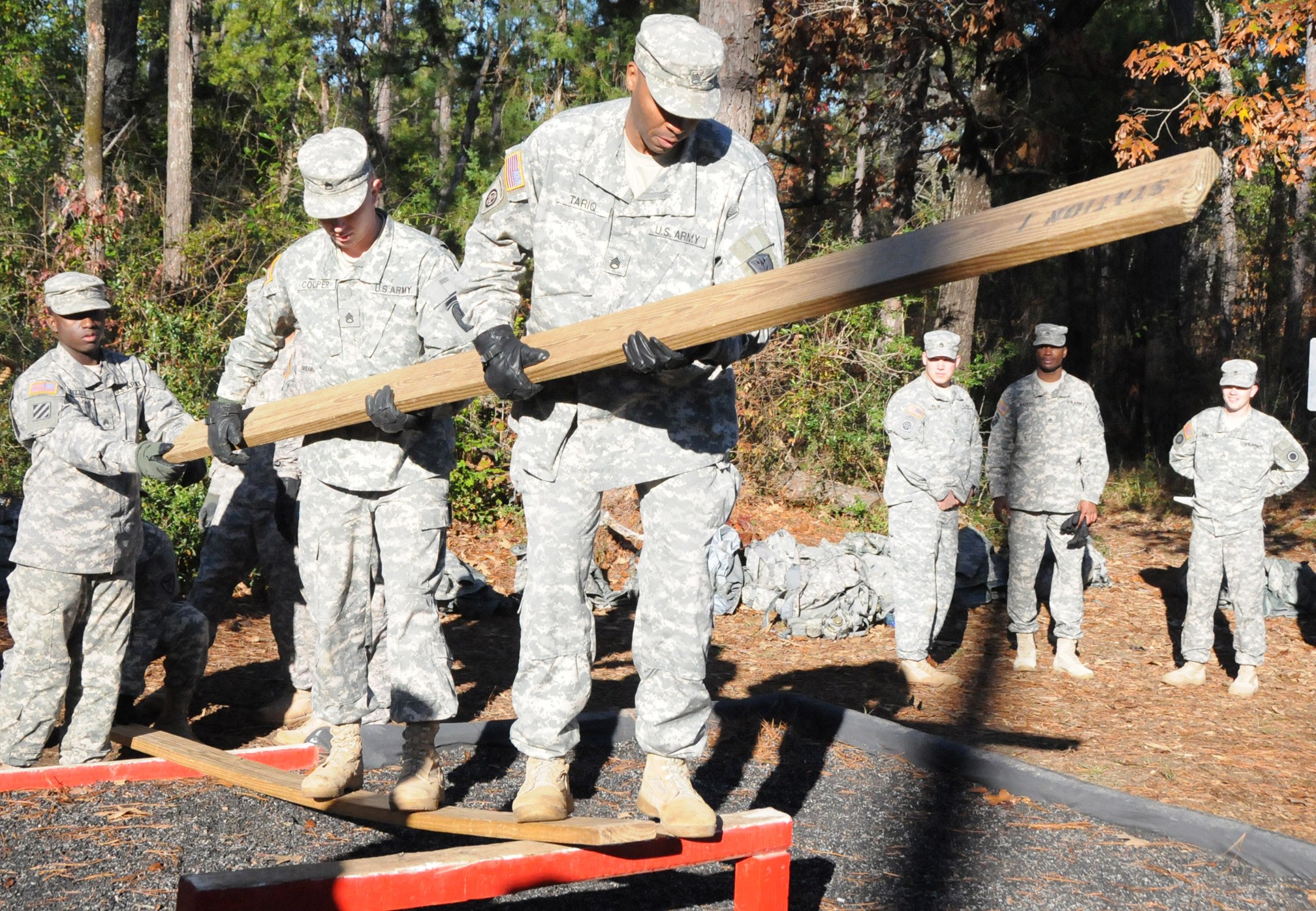FORT RUCKER, Ala. -- Being part of and working as a team is what makes a good leader, according to students and instructors at the Fort Rucker Noncommissioned Officer Academy.
More than 100 NCOA students participated in a leadership reaction course Dec. 3. It was the final event of Week 5 of the students' six-week course.
The LRC allows each NCO to test his or her leadership abilities by presenting teams of 12 to 15 Soldiers with complex physical challenges they must find a way to overcome, said 1st Sgt. Michael McGee, NCOA assistant commandant.
"This is set up so each student is given the chance to be in a leadership position," he said. "Throughout each obstacle, the leader is responsible for controlling the students and getting them through the challenge as quickly as possible."
The LRC included nine progressively challenging obstacle stations in which teams were allowed 20 minutes to solve using a limited amount of equipment such as rope and wood boards.
"I've seen some of these students get really creative during my time here," McGee said. "You give these Soldiers a couple of boards and some rope; they'll come up with some crazy stuff. I've seen Soldiers put two poles together (length-wise) to get over a fence by sliding across the two instead of putting them together with a wooden bridge provided at the same station."
While each station provided a different challenge, all stations shared a similar design: A gravel-filled box approximately 20 feet across with various obstacles placed inside. Objects painted white were "safe" for the students to stand on or use to transport equipment from one side of the box to the other. Objects painted red would cost the teams 10 seconds to their end time for each challenge. If a team member or piece of equipment touched anything painted black, it is "dead." If the team leader touched anything black, the team would have to start the challenge over.
Those who attend the NCOA are from various backgrounds and different branches of the U.S. Army such as the National Guard, active duty and the Reserves, said Staff Sgt. Paris Pennington, NCOA instructor.
"At this point in their careers, they're already leaders," he said. "A good leader is somebody who uses his team effectively based on the individuals' strengths."
Despite coming from various backgrounds, having similar Army training helped the NCOs overcome the challenges, said Staff Sgt. Gerry Pinson, C Company, 1st Battalion, 13th Aviation Regiment.
"As long as you work as a team and get the mission accomplished, it builds camaraderie," he said. "We've worked together over the last six weeks, so it was great to see it all come together here at the end."
Pinson said some of the obstacles were more difficult than others, but he was impressed with the way his team managed to get through the majority of challenges.
"It went better than I expected it to," he said. "The second station was the most difficult for us because it was so time-consuming."






Social Sharing